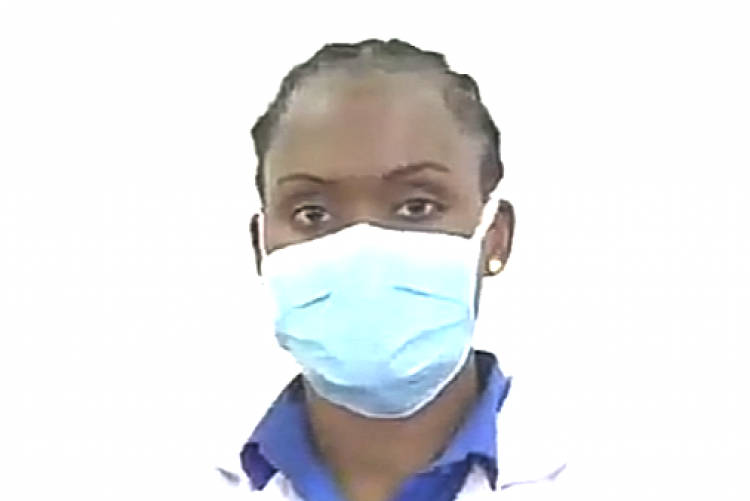Dr. Nasser Nyamweya and Prof. Kennedy Abuga discuss the subject of face-masks which have been the focus of much debate in the ongoing COVID-19 pandemic. Also mentioned are the importance of manufacturing standards and environmental concerns.
Below is their article.
Face-masks came into focus last week as an additional control measure to curb the exponential spread of the coronavirus. Unlike the social distancing and hand-washing measures, the use of face-masks has generated considerable controversy. In fact, until the last week of March, the use of face-masks was actively discouraged by health authorities in many Western countries, except for medical professionals. However, with drastic societal measures such as lockdowns not yielding the desired flattening of the curve, the continuing spread of the COVID-19 pandemic has called for a reconsideration of the value of face-masks.
Face-masks work by preventing particles larger than a certain size from passing through them. With regards to the coronavirus, the specific type of face-mask required to afford the user protection has elicited much debate.
The main transmission route is through exhaled droplets which contain the virus and are generated in the course of sneezing, coughing or talking. The droplets may be transmitted to another person directly through the air or indirectly by contact. An example of contact transmission would be an individual inadvertently touching a contaminated surface with subsequent hand transfer to their mouth, nose or eyes.
Exhaled droplets are broadly classified into those either smaller than or those larger than 5 micrometers in size. The smaller droplets, referred to as droplet nuclei, can float around in the air for some time, perhaps even hours especially in an enclosed environment.
In contrast, the larger droplets tend to settle rapidly in air and may only travel 1 – 2 meters from the infected person. Viral infection via the smaller droplets is termed airborne transmission while that due to larger ones is called droplet transmission. The controversy arises as the relative importance of the different transmission modes is viral infection has not been elucidated. According the World Health Organization (WHO), droplet transmission is the primary transmission mechanism with airborne transmission not having been yet documented. Experiments using laboratory equipment generated small droplets have shown though, that the virus can remain airborne and viable for several hours.
The droplet size distinctions are important because from a transmission perspective the key difference between different respiratory personal protective equipment (PPE) is the effectiveness to which they can protect the persons from infectious droplets of different sizes. Two commonly used PPE types for respiratory diseases are surgical face-masks and respirators, with the latter providing more effective protection against small particles. While surgical face-masks are primarily to protect patients from a health care worker’s respiratory emissions, they can reduce droplet transmission from infected to non-infected persons, thereby controlling the rate of viral transmission.
There has been concern about the available supply of personal protective equipment (PPE), especially the respirator type which are recommended for medical personnel who have a high risk of exposure due to frequent patient contact in enclosed spaces.
China produces half of the world’s face-mask supply. However, given their large population and increased local demand, other nations will have to seek home-grown solutions.
The shortage of face-masks has led to individuals making masks out of household fabrics. The protective capability of a fabric mask will depend on the type of cloth used, its porosity, thickness, the number of layers and its fit to the user’s face. One advantage of home-made masks is that they may be washable and reusable unlike commercial face-masks which are typically recommended for one-time use only. Face-masks should be used in conjunction with hand-washing and social distancing approaches.
It is important to keep in mind that disposable face-masks should be properly disposed of in order to prevent them from becoming a public health and environmental hazard.
In response to the PPE shortage, the Kenya government has commissioned local production of these vital tools in the fight against the spread of the coronavirus. For this purpose, the requisite raw materials such as cotton, polypropylene and polyester of the desired density are locally available. Furthermore, the KEBS standard for surgical masks provides for specifications for these PPEs. The structure for standard masks consists of three pleated layers made of cotton/polyester and polypropylene bound using suitable tape and fitted with straps. Local fabric processors can be re-purposed to undertake mass production of protective face masks with designs modelled on surgical masks.
Quality control of these protective masks are evaluated against the KEBS KS 2636: 2016 standard for surgical masks with respect to: bacteria filtration efficiency, particle filtration efficiency, breathing resistance, splash resistance and flammability. Once the production process is optimized for products of the desired quality, batch testing should be carried before release into the market. Mask production according to specifications is a critical component of curbing the spread of the coronavirus. Recent media coverage has reported recalls by the Netherlands of Chinese made masks over physical fitting problems and filtration test deficiencies.
Local mass production of face masks presents the most practical and sustainable solution for the shortage of PPEs in the face of export curbs by the current manufacturing countries. The re-use of masks is not yet elucidated, especially on critical aspects such as after-use disinfection and effectiveness after several washes. Studies in this area are necessary before evidence-based advice can be rendered.
Related links
- Government starts manufacturing masks and PPE to prevent Coronavirus. http://www.health.go.ke/government-starts-manufacturing-mask-and-ppe-to-prevent-coronavirus-nairobi-friday-april-3-2020/
- KEBS Standards for Personal Protective Equipment (PPE). https://www.kebs.org/index.php?option=com_content&view=article&id=671:free-kenya-standards-for-personal-protective-equipment-ppes&catid=2&Itemid=558
- Log in to post comments

